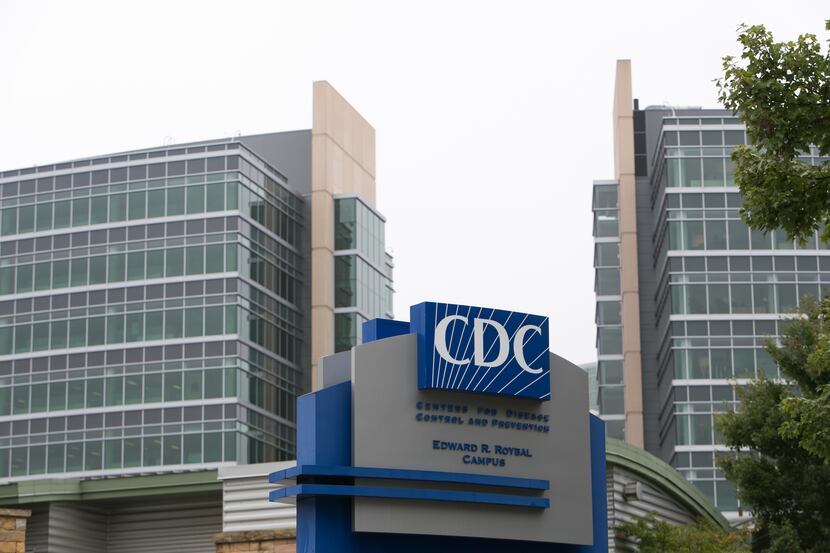CDC raises Dallas, Collin, Tarrant Counties’ COVID-19 risk level to red
The agency assigned its highest threat rating less than two weeks after Jenkins moved the county from green to yellow on its own scale.

By Marin Wolf
5:10 PM on Jul 14, 2022 CDT
The Centers for Disease Control and Prevention has raised Dallas County’s COVID-19 risk level to red as cases and hospitalizations continue to climb.
Under the red designation, which signifies high community spread, the CDC recommends that everyone wear masks indoors when in public and on public transit. That differs from the yellow designation, which recommends indoor masking only for individuals with high risk of severe illness.
The CDC has also listed Collin and Tarrant counties as red, while Denton County is still listed at the yellow level.
Two highly-contagious omicron sub-variants, BA.4 and BA.5, represent more than 75% of samples tested by University of Texas Southwestern Medical Center researchers, according to the center’s latest COVID-19 forecast.
Get the latest breaking news from North Texas and beyond.
Dallas County’s own internal COVID-19 level was in the low-risk green category less than two weeks ago until Dallas County Judge Clay Jenkins moved it to yellow using the county’s rating system. Dallas County has not yet changed its internal COVID-19 level from yellow, said Dr. Philip Huang, the county’s top public health official.
“Transmission is definitely increasing a lot, hospital numbers are going up, and people should be more cautious,” Huang said. “I wouldn’t say it’s an inconsistent message. I think they’ve got a different scoring system.”
The CDC measures community spread level using a combination of three metrics: total new COVID-19 cases per 100,000 people, total new COVID-19 hospital admissions per 100,000 people, and percentage of inpatient beds occupied by COVID-19 patients.
Huang said the county bases its internal designation on a number of indicators and that there is no one metric that triggers a change in COVID-19 level. Dallas County also uses a four-color system: green, yellow, orange and red.
The county’s public health advisory committee, which recommends COVID-19 rating changes to Judge Jenkins, will meet Tuesday. Jenkins said he doesn’t know whether the committee will recommend raising the county’s internal rating.
Infectious disease experts from the area’s major medical institutions, including UT Southwestern Medical Center and Baylor Scott & White Health, make up the committee, which Jenkins said looks at a variety of data points more closely than the CDC is able to.
“This doesn’t mean that the public shouldn’t pay heed to the recommendations of the CDC,” Jenkins said.
More than 725 people were hospitalized with COVID-19 in North Texas as of Wednesday, according to data from the Dallas-Fort Worth Hospital Council. Hospitalizations are still far lower than the over 4,000 reported at the peak of the omicron wave in late January.
The surge of severe infections during the first omicron wave rocked hospitals across the region, with many struggling to maintain staffing numbers as employees contracted the contagious variant.
Case counts are probably much higher than reported, as more people test themselves for the virus at home or forego testing altogether.
BA.5, which recently took over as the dominant COVID-19 strain in the U.S., appears to cause less severe symptoms than its predecessors, but some groups are still at risk, including the immunocompromised and people over age 65.
A total of 6,578 people in Dallas County have died from COVID-19 as of Wednesday.
Huang said the COVID-19 vaccine and booster shots are the best defense against the virus. Anyone age 5 and older can receive a booster dose, while those who are older than 50 or are older than 12 and immunocompromised can receive a second booster dose at least four months after their first.
Federal regulators have approved a child-size dose of the COVID-19 vaccine for kids 6 months to 4 years old. The age group can receive either the Moderna vaccine series, which requires two doses four to eight weeks apart, or the Pfizer series, which requires three doses about eight weeks apart.
Recommendations for avoiding COVID-19 in the red risk level
- Wear a mask indoors when in public.
- Stay up to date with COVID-19 vaccines, including booster doses.
- Get tested if you notice any COVID-19 symptoms.
- Increase ventilation when indoors by turning on fans or opening windows to increase air circulation.

Marin Wolf. Marin Wolf is a health care reporter for the Dallas Morning News. She previously covered breaking business news for The News' business desk and race and diversity for Bloomberg News. She is a graduate of the University of North Carolina at Chapel Hill Hussman School of Journalism.
marin.wolf@dallasnews.com @maringwolf